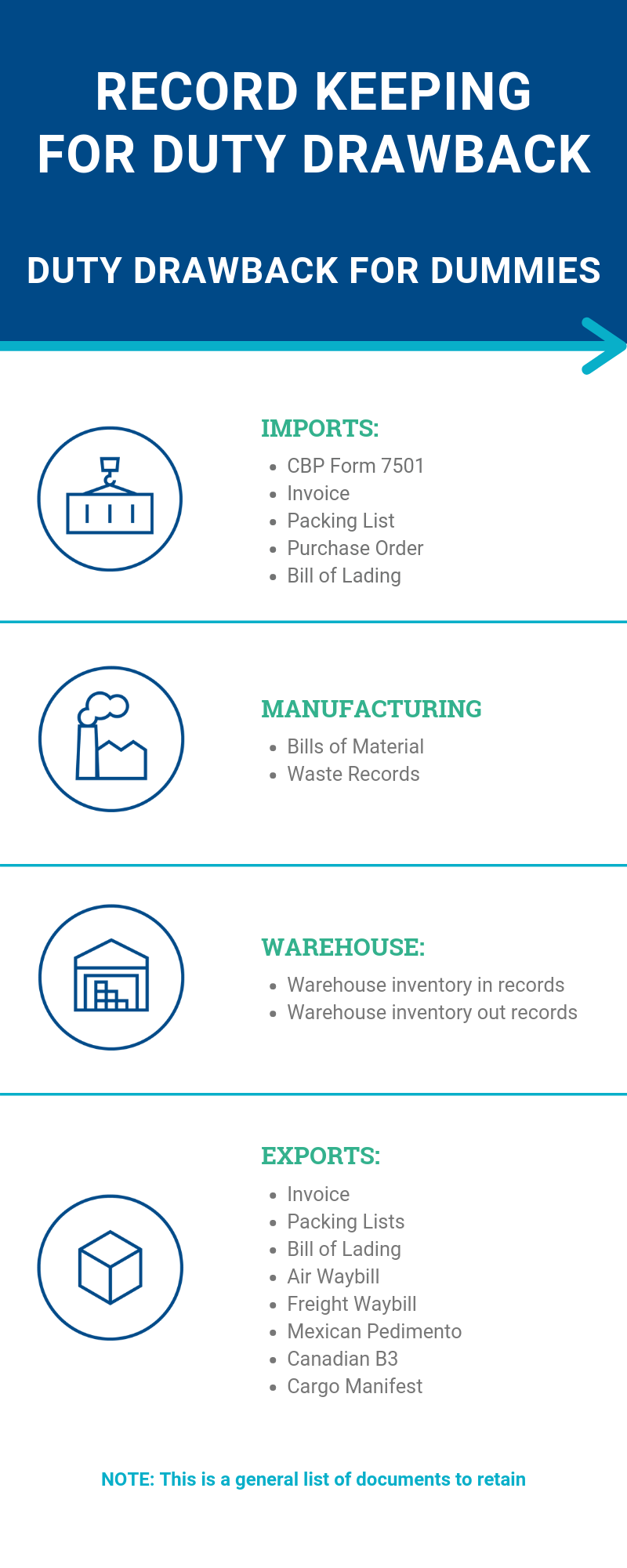4 Key Tips for Filing Duty Drawback
08/13/2019

Duty drawback can be a great opportunity for companies to save on duties, but to utilize it to its full extent it is necessary to understand the intricacies of the program. There are strict time frames that must be abided by, and recordkeeping is imperative. The duty drawback regulations have changed recently due to the Trade Facilitation and Trade Enforcement Act (TFTEA) and manual claims are no longer accepted; however, Ascent Global Logistics can help you get your duty drawback claim filed electronically under the new regulations.
Below are a few tips from the Ascent Global Logistics Duty Drawback team on how to get started and participate in duty drawback.
1. Tips for CBP Form 7553 (Notice of Intent to Export, Destroy or Return Merchandise for Purposes of Drawback)
Should I fill out a CBP Form 7553 (Notice of Intent to Export, Destroy or Return Merchandise for Purposes of Drawback) or go through the duty drawback application process?
CBP Form 7553 must be filled out and sent to U.S. Customs prior to the shipment being exported or destroyed. Why is it important to fill out the CBP Form 7553 first?
- It allows Customs to thoroughly examine the merchandise or waive their right to the inspection and sign off on the CBP Form.
- This is an option for smaller companies that do not export often.
- Only after the merchandise has been exported or destroyed can the drawback claim be filed.
2. Tips for the Drawback Application Process – Privileges


There are a few drawback privileges offered by the U.S.
Customs that can be taken advantage of:
- For past shipments, a one-time waiver of prior
notice of intent to export (OTW) may be filed. - For future shipments, a waiver of prior notice of
intent to export (WPN) may be filed. - Accelerated Payment (AP)
A combined privilege application allows claimants to use
a combination of these privileges in one application
instead of filing individual applications, saving time and money.
3. How to Get the Most of Accelerated Payment (AP)
- A claimant must be accepted by CBP for Accelerated Payment.
- If approved, claimants can receive their refunds in
just a few weeks. - A Drawback bond is required.
4. What Documents to Keep for Duty Drawback
As a rule, claimants are legally obligated to hold certain records:
- Import records
- Inventory records
- Manufacturing records
- Records on the exportation of all goods involved
Documents must be kept for three years after a claim is filed, starting from the date of liquidation of the drawback claim. Read more about duty drawback recordkeeping requirements here.
Learn More
Due to all of the recent changes to the duty drawback application process, it is important to have an experienced team on your side. With the correct information, you can file and receive your claim within 30 days if qualified and avoid unnecessary costs during the filing process. To learn more about duty drawback, download our Duty Drawback 101 guide.
January 27, 2025
Navigating Chinese New Year Shipping Delays
December 9, 2024
Thank you for contacting Ascent!
A member of our team will be in contact within a few business hours.
Okay